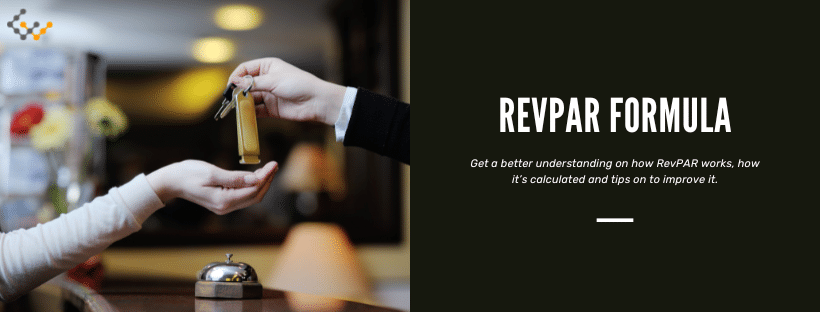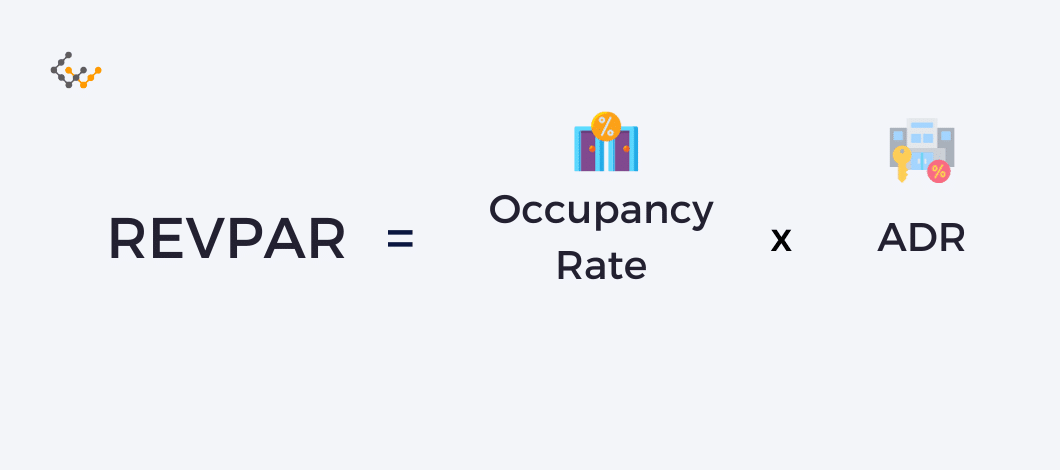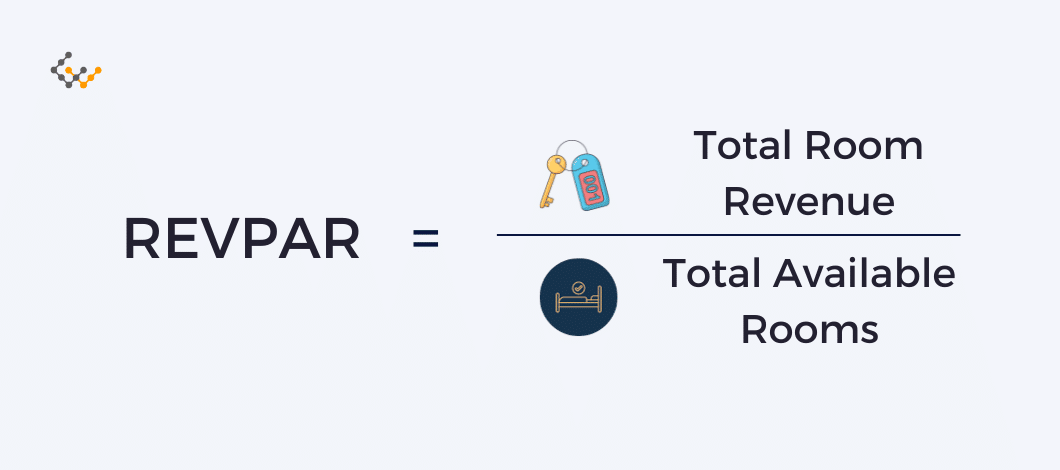RevPAR Formula: How to Calculate Revenue Per Available Room

Revenue per available room (RevPAR) provides insights into property performance and profitability. Here’s a look at what RevPAR is, how to calculate it, and why you should know it if investing in hotel properties.
What is Revenue per Available Room (RevPAR)?
RevPAR is a performance metric used in the hotel industry to measure the average revenue earned per available room during a specific period.
Calculating RevPAR helps managers and investors understand their property’s room occupancy rate and average daily rate (ADR). These calculations can then be used to better inform marketing and pricing decisions.
Answer a few questions and get custom mortgage quotes. We'll match you with offers from our network of 650+ lenders.
Importance of RevPAR in Commercial Real Estate
Revenue per available room is specific to hotels and similar properties. It should be used when assessing a hotel, motel, inn, bed and breakfast, or similar property. Although less common, a similar calculation might be useful for campgrounds and glamping properties.
When investing in these commercial real estate properties, RevPAR can be helpful for:
- Pricing Aid: RevPAR and occupancy rate can inform pricing decisions. High RevPAR and low occupancy suggest rates are too high, while low RevPAR and high occupancy suggest rates are too low.
- Performance Measure: Tracking RevPAR lets investors and managers assess performance trends over time. It might be evaluated on a weekly, monthly, or annual basis.
- Competitive Benchmarking: Comparing RevPAR with competitors lets managers and investors gauge their property’s market position.
- Valuation: RevPAR is one of many metrics used to value hotel properties.
How is RevPAR Calculated in Hotels
Calculating RevPAR is straightforward if the average daily rate is known. It’s the occupancy rate multiplied by the average daily rate (ADR). If ADR isn’t known, the calculation can also be done using the total room revenue and number of available rooms.
RevPAR Formula and Calculation
RevPAR = Occupancy Rate x ADR
RevPAR = Total Room Revenue / Total Available Rooms
To calculate these other factors:
- Occupancy Rate = Total Available Rooms / Number of Rooms Sold
- ADR = Total Room Revenue / Number of Rooms Sold
Examples of RevPAR
The following examples show how RevPAR might be calculated for various properties and situations. All businesses in the hospitality industry can use the same formula:
- A typical hotel in a large city might want to know its monthly RevPAR. If the hotel had an 80% occupancy rate and an ADR of 150, its RevPAR would be $120 ($120 = 80% occupancy x $150 ADR).
- A boutique inn might want to know its RevPAR for a holiday weekend that brought in tourists. If it was fully booked, its occupancy rate was 100%, and it had an ADR of $300, its RevPAR would be $300 ($300 = 100% occupancy x $300 ADR).
- A small B&B might want to know its annual RevPAR. Assume the 4-bedroom in had 1,460 rooms available during the year, bringing in $150,000. Its RevPAR for the year would be $103 ($103 = $1,500 revenue / 1,460 available rooms).
- An older motel might want to know its RevPAR for a 5-month offseason to see whether the owners should remain open or take time off. If the motel had an ADR of $65 and an occupancy rate of 40%, its RevPAR would be only $26 ($26 = 40% occupancy x $65 ADR).
Notably, calculations using ADR remain the same regardless of the property’s size and number of rooms.
How to Improve Your RevPAR: 6 Tips
Increasing RevPAR is highly beneficial, as getting more per available room can significantly boost the bottom line. The metric should naturally increase during busy times, such as holiday weekends, peak season, and during major events. In addition to these, managers can take an active role in improving RevPAR by:
1. Dynamic Pricing: Implement pricing strategies that adapt to demand fluctuations. Raise rates during busy seasons to take advantage of the demand, and lower during slow times to increase occupancy rates.
2. Complimentary Services: Free perks, such as included breakfast, an airport shuttle, and complimentary business printing, can increase the value of a stay and thus, how much guests are willing to pay for a room.
3. Other Amenities: Amenities such as a business center, pool, and exercise room also increase the value that a hotel provides and how much guests will pay.
4. Remodel: Outdated hotels can likely increase their rates after completing a refresh.
5. Direct Booking: Direct booking usually provides the highest revenue, even if guests pay the same rate. All hotels should encourage guests to reserve rooms directly with the hotel.
6. Customer Loyalty Programs: Initiate programs that encourage repeat bookings, which can help boost occupancy rates.
RevPAR vs Other Hotel Metrics to Consider
RevPAR is one of several metrics that hotel investors should be familiar with. Some others are:
- ADR (Average Daily Rate): Represents the average rental income per paid occupied room. Used in the RevPAR calculation.
- RGI (Revenue Generation Index): A relative measure of your hotel’s revenue-generating capabilities compared to its competitors.
- GOPPAR (Gross Operating Profit Per Available Room): Shows profits after operating expenses are subtracted from revenues, providing a per-room profit.
Each of these metrics provides different insights into hotel operations, and their importance varies depending on specific business objectives and operational contexts.
Wrapping Up
RevPAR is a vital calculation for hoteliers balancing occupancy and room rates. By understanding and effectively utilizing the RevPAR formula, you’ll be better able to evaluate room pricing, property trends, and competitiveness.



